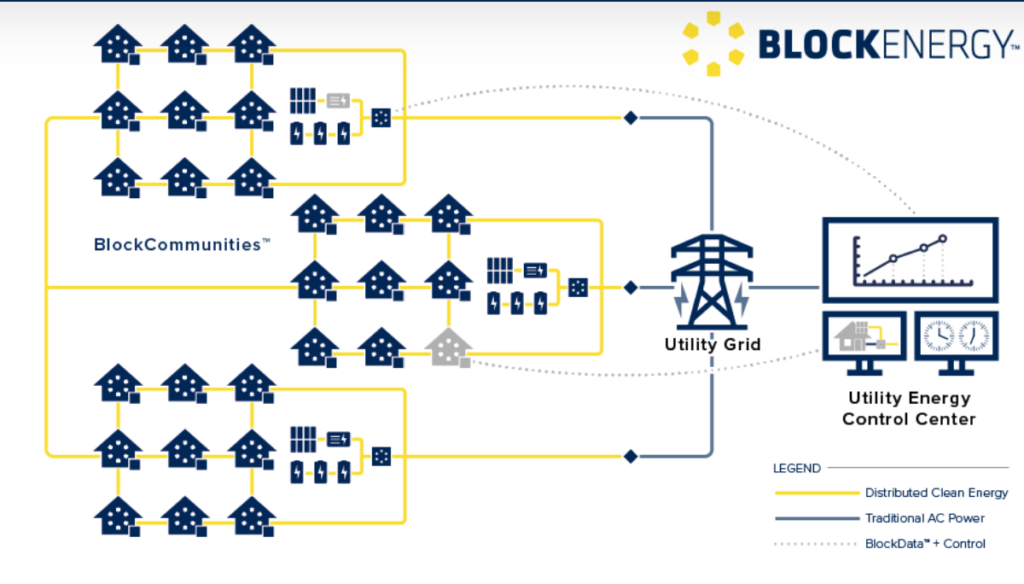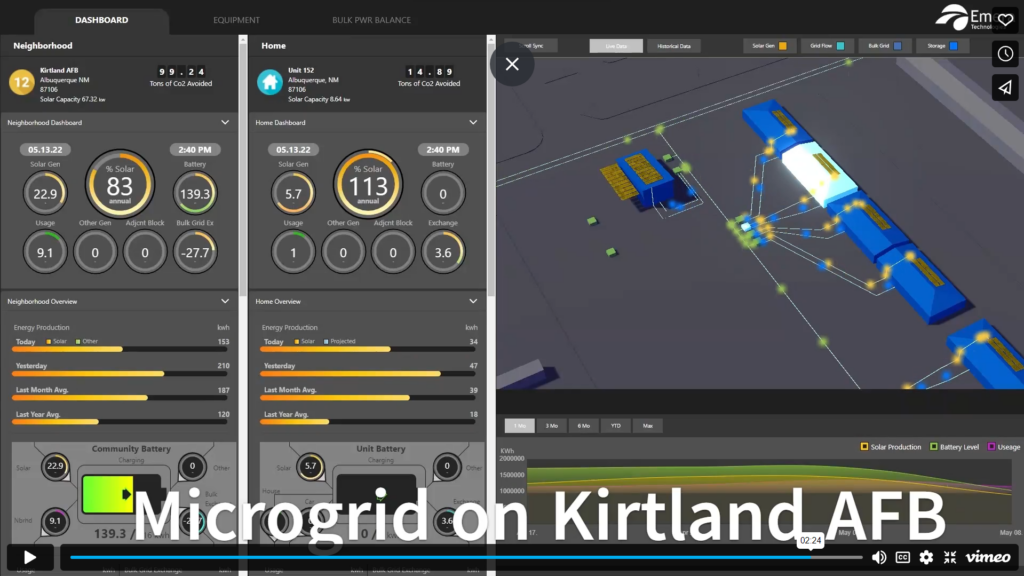A Little Ray of Sunshine – How BlockEnergy Platform is connecting Roofs to Rooftop Solar

BlockEnergy helps connect homeowners with utilities to create more resilient energy infrastructure
Decentralized energy, distributed generation, microgrids (oh my!). In an
industry with so much jargon, is there any room for a platform business?
BlockEnergy hopes so. Their business model is simple: act as a platform
between homeowners or communities willing to have solar installed on their
roof, and utility companies who want to provide reliable and clean energy to
their customers.
Value Creation for Homeowners
BlockEnergy facilitates this connection in a unique way, underpinned by
three facets of their business model:
1. BlockEnergy coordinates with homeowners, community
boards or developers to initiate rooftop installation of solar panels and installation of BlockBox.BlockBox acts as a household battery, an AC/DC converter, and a data sensor for
the house it is installed at.
2. In communities with at most 50 BlockBoxes, BlockEnergy
installs a Community Battery system, which stores energy generated by the solar
panels in that community beyond what is stored in each households battery
3. All additional energy is fed into the power grid run by
the local utility. Any energy needs not met by the Solar PVs or batteries is
supplied as usual from the grid.
Another unique aspect of this concept of a “microgrid platform” is that all
the assets are owned and operated by the local utilities. The homeowners or
developers don’t pay for the solar panels or BlockBoxes; the installation and
maintenance is paid and insured by the local utility, and the homeowners pay
for electricity at a rate comparable to other customers.
However, they benefit from having increased energy reliability due to having
a household and community battery. This means that if one part of the microgrid
is not generating solar due to cloudy conditions, they are still able to use
solar energy supplied by the community grid. Similarly, one households
generation could subsidize another
households consumption due to differences in production and demand.
The company Vice President describes the value proposition as “secure energy as a service with renewables, resiliency, controls and real-time data”[1].The BlockBox data provided to the homeowner contains information related to their battery and community batter level, or as detailed as energy usage per appliance, since each appliance has a unique energy signature. This enables homeowners to make decisions around how much they use certain appliances or when to upgrade to an energy-smart appliance.
Value Creation for Utilities
Local utilities capture the value of BlockEnergy through three streams:
1. Local utilities build out their solar capacity and have
more power going into the grid
2. They increase their battery storage capacity in
neighborhoods directly benefitting from increased storage
3. They capture all data collected from the BlockBoxes with
near real-time monitoring, enabling them to determine when it is best from a
cost perspective to have energy supplied from solar, or to draw from batteries,
or to supply traditional grid energy
The utilities also benefit by the decentralized generation and storage in a
few tactical ways; namely, a small scale battery failure at a household level
is much less a threat to energy reliability than a largescale battery failure
at a mega-storage facility. Additionally, they benefit by increasing their
renewable generation if the utility has committed to certain renewable targets.
Scalability and Sustainability
While same side network effects for community members is large (i.e. more
solar on roofs means more full batteries, resulting in more reliable power), it’s
not clear that any same side network effects exist for the utility side, unless
neighboring local utilities can create trading contracts to increase
reliability for both.
Conversely, cross side network effects benefit utilities, since the more
roofs they have solar installed on, the more energy they are able to produce.
However, since in many parts of the US there is only one option of utility company,
the consumer does not benefit from their being many utility companies using
BlockEnergy.
In addition to these disjointed network effects, the scalability of this
business model may be limited by three factors:
1. Prohibitive economics for solar installation and maintenance
in areas where solar is not cost competitive
2. Competing utility interests – many utility companies are
innovating in the microgrid space, and may want to have their own “BlockBox”
solution instead of partnering with BlockEnergy
3. Change of value proposition for Solar – traditionally
installing solar panels meant a lower electricity bill. BlockEnergy’s model does
not guarantee this, but does increase reliability
Therefore, this business model faces several threats to it’s scalability and
sustainability, but may be a winning model for areas that are sunny, prone to
natural disasters and frequent blackouts, such as Florida, California, Texas, and
parts of the southwest.





Wow, Kate! This is such an interesting implementation of solar energy infrastructure that I’d never heard of before. I come from South Africa, and the country is currently facing a huge electricity crisis due to aging infrastructure that wasn’t maintained by the State-owned Energy Producer. BlockEnergy’s model sounds like it could solve these issues, especially if it’s able to make solar affordable enough enough by spreading the financial load over multiple properties in a common area. Like you said, the affordability piece is not guaranteed, but I’d be interested to see somebody try this in that setting and innovate on the pricing to make this accessible for lower-middle income communities. Thank you for posting about this!